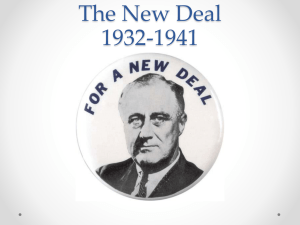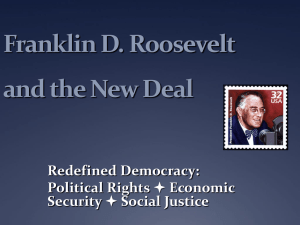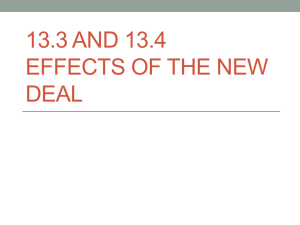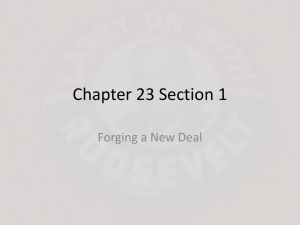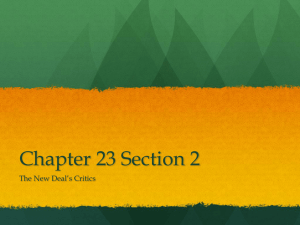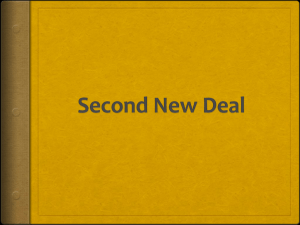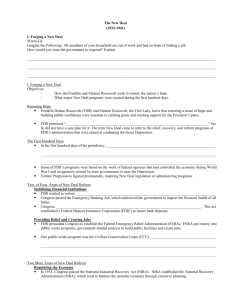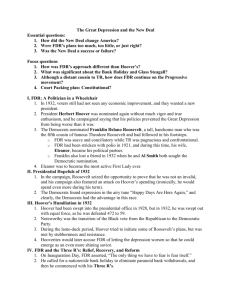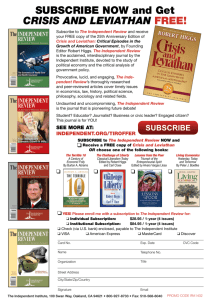File
advertisement
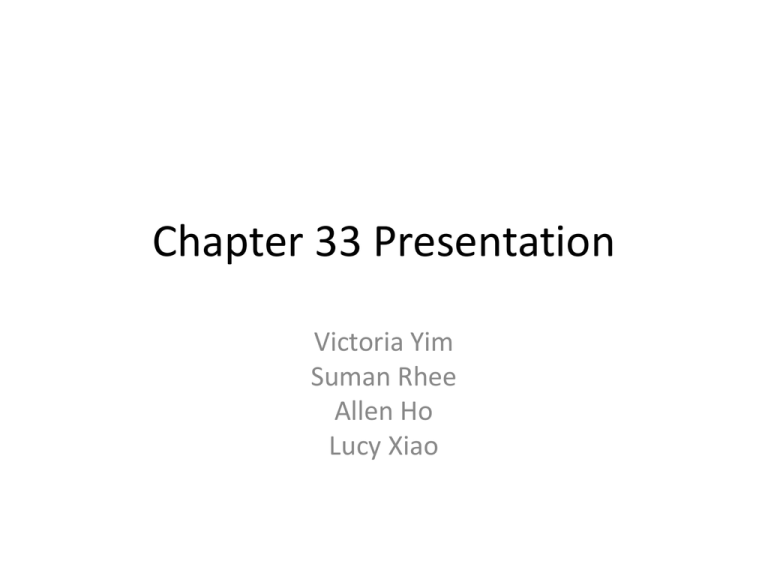
Chapter 33 Presentation Victoria Yim Suman Rhee Allen Ho Lucy Xiao Why did Roosevelt ask Congress for a bill that would allow him to add justices to the Supreme Court? • Supreme Court kept blocking Roosevelt's programs • a member to the Supreme Court for every existing member over 70 maximum possible total of 15 total members. • Congress voted against him because it did not want to lose its power. • Roosevelt was ripped for trying to become a dictator. What were the consequences of FDR's attempt to pack the Court? • Court Packing- Franklin Roosevelt's politically motivated and ill-fated scheme to add a new justice to the Supreme Court for every member over seventy who would not retire. His objective was to overcome the Court's objections to New Deal reforms. • Hugo Black- justice appointed by FDR, into the New Deal, replaced the oldest justice • FDR’s “court-packing scheme” failed. some justices to start to vote his way (Owen J.Roberts, former conservative). • failure showed Americans did not want to tamper with the justice system. How did labor respond to the improvement of conditions brought about by the New Deal? • strikes and walkouts in 1934 • Congress struck down the National Recovery Administration • passed the Wagner Act – guaranteed the right of unions to organize and to collectively bargain with management • under the management of the National Labor Relations Board, unskilled workers began to organize into effective unions – John L. Lewis - Head of United Mine Workers • also formed the Committee for Industrial Organization (CIO) – led series of strikes, including the sit-down strike at General Motors automobile factory in 1936 What was the significance of the 1936 election? • Republican nomination: Alfred Landon (gov. of Kansas) – criticized FDR's massive spendings – however, he supported many of FDR's New Deal = hypocrite – weak on radio and personal campaign • 1934 - American Liberty League formed by conservative Democrats and wealthy Republicans – against "socialist" New Deal • FDR won election: 523 vs 8 electoral votes – won because he appealed to the "forgotten man" – forged a powerful and enduring coalition of the South, blacks, urbanites, and poor What did William Leuechtenburg mean when he called the New Deal a “half-way revolution”? • Not too radical but not conservative • It was created in response to the Great Depression • First time government assisted people to help hardship • Going against capital ideals Assess the sucessfullness of FDR in his second term. • In 1937, the economy took another brief downturn when the “Roosevelt Recession,” caused by government policies. • Finally, FDR embraced the policies of British economist John Maynard Keynes. – In 1937, FDR announced a bold program to stimulate the economy by planned deficit spending. – In 1939, Congress relented to FDR’s pressure and passed the Reorganization Act, which gave him limited powers for administrative reforms, including the key new Executive Office in the White House. – The Hatch Act of 1939 barred federal administrative officials, except the highest policy-making officers, from active political campaigning and soliciting. What criticism of the New Deal seems most fair to you? Least fair? • foes of the New Deal condemned its waste, citing that nothing had been accomplished. (least fair) • Critics were shocked by the “try anything” attitude of FDR, who had increased the federal debt from $19.487 million in 1932 to $40.440 million in 1939. (most fair)



